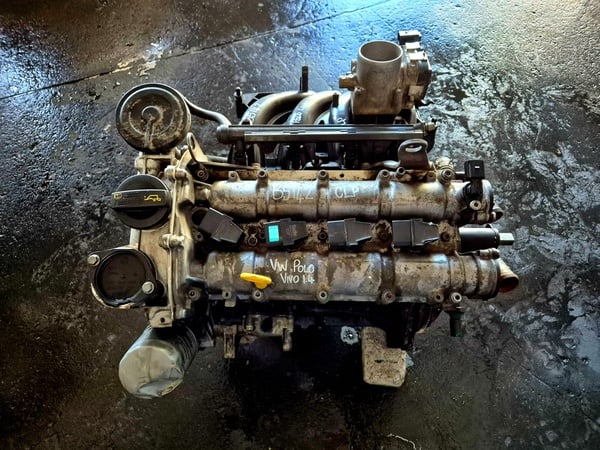Exactly How a Clp Engine Can Enhance Effectiveness in Different Industries
The introduction of CLP engines notes a significant change in functional performance throughout various fields, driven by their capacity to enhance fuel usage and reduce downtime. As companies significantly focus on sustainability along with efficiency, the function of CLP engines comes to be also a lot more crucial.
Introduction of CLP Engines
CLP engines, or Continual Fluid Propellant engines, stand for a significant advancement in propulsion modern technology, specifically for room applications. These engines make use of a continual feed system that enables the sustained expulsion of propellant, leading to enhanced efficiency and performance contrasted to conventional solid or hybrid propulsion systems. By keeping a constant circulation of liquid propellant, CLP engines can accomplish a lot more specific drive control, which is important for steering spacecraft in various goal circumstances.
The layout of CLP engines incorporates innovative materials and innovative fuel management systems. clp engine. This results in lowered weight and increased dependability, crucial variables for long-duration area goals. Moreover, the continuous procedure lessens the risk of burning instability, a typical obstacle in traditional rocket engines.

Advantages in Manufacturing
The production of Constant Liquid Propellant (CLP) engines presents numerous noteworthy benefits that improve both performance and cost-effectiveness. One of the main benefits is the structured manufacturing procedure, which minimizes the complexity connected with standard propulsion systems. By utilizing fluid propellant, manufacturers can accomplish higher precision in engine efficiency, leading to maximized energy result and decreased waste.
Additionally, CLP engines assist in a higher degree of modularity, permitting less complicated assimilation right into various manufacturing lines. This adaptability can considerably decrease preparations and improve total operational versatility. Making use of CLP technology additionally often tends to decrease the requirement for substantial upkeep due to fewer moving components, which translates right into lowered downtime and operational costs.

Applications in Logistics
Leveraging Continuous Liquid Propellant (CLP) engines in logistics uses significant advantages in functional efficiency and dependability. These engines provide a durable remedy for different transportation demands, enabling the smooth activity of goods throughout large ranges. The inherent style of CLP engines allows for consistent power output, which translates into smoother a fantastic read and more foreseeable transport timetables.
Among the crucial applications of CLP engines in logistics is in sturdy freight transportation, where they can drive both ground and airborne vehicles. Their ability to keep high efficiency under varying tons problems ensures that distribution timelines are met, consequently enhancing client fulfillment. Furthermore, CLP engines can be incorporated into automated logistics systems, facilitating real-time tracking and enhancing route preparation.
Moreover, the sturdiness of CLP engines decreases maintenance downtime, allowing logistics companies to maximize their functional abilities. This is specifically beneficial in warehousing operations, where efficiency in handling and carrying goods is vital. As logistics continues to advance, the integration of CLP engines represents a forward-thinking strategy that not just boosts efficiency but likewise sustains the sector's growing demands for dependability and rate.
Effect on Power Effectiveness
Exactly How do Continual Liquid Propellant (CLP) engines boost energy efficiency in transport? CLP engines use a consistent circulation of liquid fuel, enhancing burning processes and preserving a steady thrust outcome. This design minimizes energy losses related to traditional burning engines, where gas distribution can vary and bring about ineffectiveness.
The continual procedure of CLP engines permits a much more reliable thermal cycle, causing higher certain impulse compared to traditional engines. clp engine. This translates to minimized gas intake for the exact same quantity of job done, considerably decreasing operational costs throughout numerous transportation sectors, go to my site including aviation and maritime markets
Moreover, the ability of CLP engines to keep ideal efficiency under differing lots problems reduces the demand for regular acceleration and deceleration, even more enhancing gas effectiveness. Enhanced power effectiveness not only contributes to set you back financial savings but also causes reduce greenhouse gas discharges, straightening with global sustainability objectives.
Future Trends and Innovations
Arising improvements in Constant Liquid Propellant (CLP) engine technology guarantee to reinvent the landscape of transportation performance and sustainability. As markets pivot toward greener alternatives, CLP engines stand at the center, incorporating ingenious materials and style methodologies that boost efficiency while lessening ecological effect.
Among one of the most appealing trends is the fostering of crossbreed systems that integrate CLP engines with renewable resource sources. This synergy can optimize gas intake and minimize exhausts, lining up with international sustainability objectives. Additionally, advancements in computational liquid dynamics (CFD) are facilitating the style of more aerodynamically reliable engines, leading to decreased drag and boosted site web fuel performance.
Additionally, the advancement of wise monitoring systems is readied to enhance operational performances. These systems take advantage of information analytics and IoT innovation to enhance engine performance in real-time, ensuring that the engines run within their most efficient parameters.
As research continues to check out alternative propellant solutions-- such as biofuels and artificial fuels-- the future of CLP engines looks appealing. By utilizing these advancements, markets can not only boost their effectiveness however additionally add considerably to a cleaner, more sustainable future in transportation.
Conclusion
To conclude, CLP engines represent a considerable advancement in performance across multiple markets. Their capability to optimize fuel consumption and reduce operational costs, incorporated with a constant feed system, enhances power result and operational integrity. The assimilation of innovative products and fewer relocating parts minimizes maintenance requirements, while alignment with sustainability objectives placements CLP engines as a pivotal modern technology for the future. Continued innovation in this area guarantees more renovations in efficiency and ecological performance.